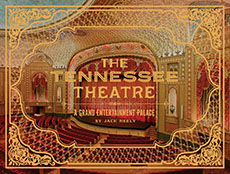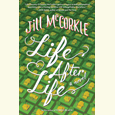Show Business
In The Tennessee Theatre journalist Jack Neely celebrates Knoxville’s landmark movie palace
Downtown Knoxville is in some respects a brick-and-mortar representation of temporal dissonance. It’s possible to open the doors of a building whose façade has shadowed Gay Street for a hundred years and discover a new hookah lounge, a French bakery, or an old-fashioned country store in existence for less than a decade. These recreated spaces are not what set American cities apart from one another, as they all float atop the same roiling cultural waters. No, what really matters to a city’s identity are the places that maintain a singular character over decades of change and still find a way to coexist with their contemporary neighbors. In Knoxville, as journalist Jack Neely points out in The Tennessee Theatre, that distinctiveness is created by its surviving movie palace.
 In this detailed and exquisitely presented history, Neely brings to life Hollywood’s Golden Age as seen on the screens of downtown Knoxville. By 1928 there were nine movie theatres in the downtown area. Six of them sat on Gay Street. During the Depression, some theatre owners managed to stay in business by transitioning from the old vaudeville-style live acts to moving pictures, but a large and unique part of the Tennessee’s continued success during the Depression actually came from remaining a theatre in every sense of the word: the majority of its business was movies, but it still brought nationally renowned vaudeville acts to Knoxville well into the thirties, and it hosted more unconventional events, like weddings, as well. “It was show business,” Neely writes, “and much about putting on a happy face.”
In this detailed and exquisitely presented history, Neely brings to life Hollywood’s Golden Age as seen on the screens of downtown Knoxville. By 1928 there were nine movie theatres in the downtown area. Six of them sat on Gay Street. During the Depression, some theatre owners managed to stay in business by transitioning from the old vaudeville-style live acts to moving pictures, but a large and unique part of the Tennessee’s continued success during the Depression actually came from remaining a theatre in every sense of the word: the majority of its business was movies, but it still brought nationally renowned vaudeville acts to Knoxville well into the thirties, and it hosted more unconventional events, like weddings, as well. “It was show business,” Neely writes, “and much about putting on a happy face.”
As the Depression gave way to World War II, the Tennessee kept abreast of the times by making its auditorium available for war-bond drives. It did not embrace all cultural changes and trends, however, as Neely notes: “Any narrative history of the Tennessee Theatre has to acknowledge that for its first 35 years, the Tennessee was with very few exceptions a whites-only theatre.”
When the Tennessee Theatre closed its doors as a first-run cinema in 1977, its best years still lay ahead. A renovation from 2003 to 2005 turned it from a majestic ruin into the rejuvenated, live-performance palace it is today. It was, Neely writes, “the most painstaking renovation of any building in Knoxville history.” And while that attention to architectural nuance unveiled a beautiful historic landmark, the Tennessee’s real value lies in the fact that Knoxville has resisted the urge to turn it into something commercial. When the city brought it back to life, it wasn’t investing in a building so much as remembering, and celebrating, its own history.
Tristan Charles graduated from the University of Tennessee and works at Parnassus Books in Nashville.


